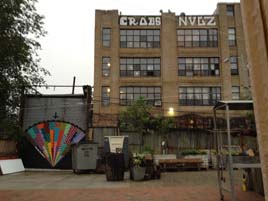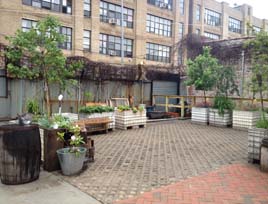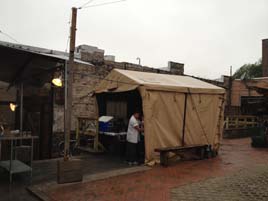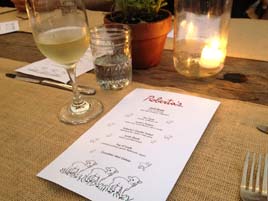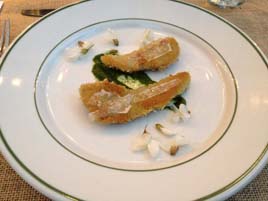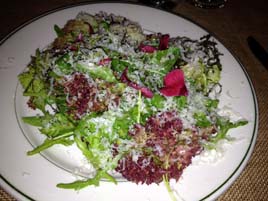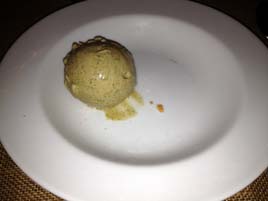Paprika
 Sunday, July 22, 2012 at 09:19AM
Sunday, July 22, 2012 at 09:19AM 
 I’ve ranted about the over-exposure of Italian cuisine in New York City. And one might think that Paprika in the East Village is just another neighborhood Italian spot, of which the city has about 80 dozen.
I’ve ranted about the over-exposure of Italian cuisine in New York City. And one might think that Paprika in the East Village is just another neighborhood Italian spot, of which the city has about 80 dozen.
Turns out, one would be wrong. Paprika offers something special. The restaurant had been around a decade or so, mostly below the radar, before the chef/owner, Edigio Donagrandi, tossed out the old menu a few months ago and installed the cuisine of his native region, Valtellina.
No, I hadn’t heard of Valtellina either. It’s a mountainous area on the Swiss border, where the pastas are made with buckwheat, vegetables are pickled for the long winters, and the salads are heavy on dandelion and kale, potatoes and leeks. If any other chef in town is serving the cuisine of Valtellina, I haven’t heard of it.
 The restaurant occupies a broad, sun-drenched storefront on St. Mark’s Place. The decor is somewhat bare-bones: wooden tables, white brick walls adorned with farm implements, and a back wall painted paprika red. There wasn’t much of a crowd on a mid-week evening.
The restaurant occupies a broad, sun-drenched storefront on St. Mark’s Place. The decor is somewhat bare-bones: wooden tables, white brick walls adorned with farm implements, and a back wall painted paprika red. There wasn’t much of a crowd on a mid-week evening.
The menu is inexpensive by today’s standards, with salads $9–10, starters $11–14, pastas $15–17, entrées $18–25, and side dishes and desserts $7. Portion sizes are generous. The all-Italian wine list runs to about thirty bottles (ten by the glass), many of them off the beaten path, and most below $50.
The publicist arranged our visit and we didn’t pay for our meal. As always, I don’t issue a formal rating in these circumstances.
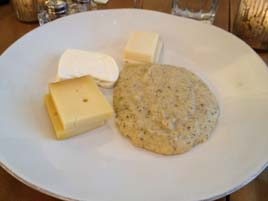

Soft polenta made with cornmeal and buckwheat ($14; above left) is served with three regional cheeses. It’s an unusual starter, better for sharing. The polenta, coarser and grittier than usual, takes some getting used to.
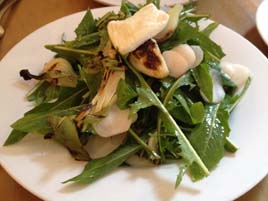

We loved the Dandelion Salad ($10; above left) with pickled red radishes, spring onions, and crescenza, a soft Northern Italian cheese. Where I grew up, dandelions were considered weeds. I’ll never think of them that way again.
Bresaola ($13; above left), a salted air-dried beef, originated in Valtellina. I’ve seen it in many Italian restaurants, but not served the way it is here, with pickled oyster mushrooms and red radishes. I loved this combination, but my girlfriend was not fond of it.

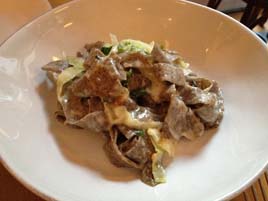
Beef Crudo ($13; above left) is served on a slice of crusty garlic bread with a chicory salad on the side. I can’t comment on its authenticity, but it looked like an uncooked hamburger patty and wasn’t much more interesting than that.
Pizzoccheri Valtellinese ($16; above right) was the best of the three pastas we tried, and like nothing I’d had before. It’s a buckwheat tagliatelle with Savoy cabbage, casera cheese, potatoes and garlic.


Gnocchi ($15; above left) were a close second. They’re hand-rolled and pan-crisped, but perhaps outclassed by the wonderful roasted mushrooms and sage.
We were less enthralled with Buckwheat Lasagna ($17; above right). Again, I can’t comment on the authenticity, but to our taste the dish needed more flavor than braised leeks and casera cheese could supply.

We tried only one of the entrées, but it was spectacular: the Grilled Trout ($23; above). The trout is filleted, spread open, and brushed with a pine nut parsley pesto, spring onions and braised fennel. Then it’s folded back on itself, roasted and charred on the grill. Michael White could put it on the menu at Marea, charge $40, and be hailed as a genius.
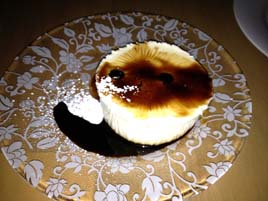
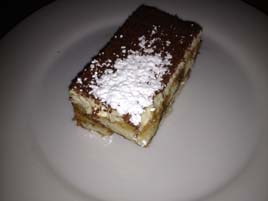
The two desserts we sampled, Panna Cotta ($7; above left) and Tiramisu ($7; above right) were more conventional. Both are solid renditions of Italian classics, but you’ve had them before.
I can’t remember the last time I visited an Italian restaurant, and had so many unfamiliar dishes. There were a couple I didn’t care for, though for all I know they may be perfect renditions of favorites from the chef’s homeland. But most of the food is top-notch, and it’s hard to think of another Italian restaurant that is so full of pleasant surprises.
Paprika (110 St. Mark’s Place between First Avenue & Avenue A, East Village)









































































